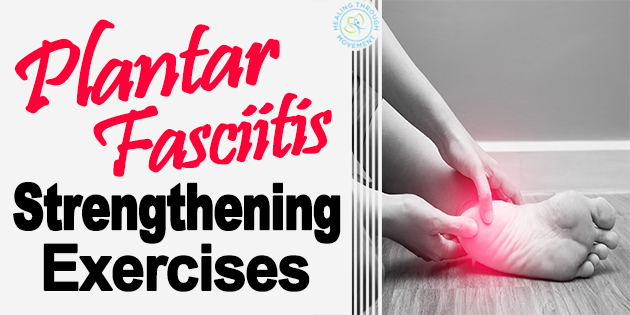Strengthening Exercises for Plantar Fasciitis
An exercise regimen for plantar fasciitis must include strengthening exercises for the foot muscles. Strong intrinsic foot and lower leg muscles are necessary to sufficiently support the foot, which is constantly exposed to stress, and to maintain a healthy arch. It is suggested that strengthening exercises should be initiated once the affected foot demonstrates improved flexibility during stretching exercises, without experiencing pain.
A tight calf muscle can put additional stress on the injured plantar fascia, which may aggravate the condition or further slow down the healing process. The calf is located on the posterior (or back) leg, just below the thigh. This powerful and large muscle group is involved in most lower leg activities, such as standing, walking, jumping, and running.
Using your toes to pull a towel or pick-up marbles conditions the foot’s intrinsic muscles and the toe flexors that support the arch. Wall lunges, toe pulls, toe walking with opposite-ankle dorsiflexion, and toe tapping are only few of the most recommended strengthening exercises.
Towel stretch
Sit tall as you place the affected foot on a towel on the floor. Using your toes, tuck or pull the towel towards you. Afterwards, push the towel away, also through your toes. Repeat the exercise until fatigued. As your strength improves, place a weighted object, such as a can of soda, on the other end of the towel.
Marble pick-ups
For this exercise, marbles are placed next to an empty cup on the floor. Sit tall and using your toes, pick-up one marble at a time and put it into a cup.
Exercises You Should Not Do If You Have Plantar Fasciitis
In general, any exercise that causes pain should be avoided. During acute pain, it is recommended to rest the affected foot and avoid high-trauma sports activities, which involve repetitive running, jumping, and landing. Exercising on hard or uneven surfaces must be avoided.
If a prescribed exercise causes pain, it must be stopped at once. It is recommended to consult your physician or physical therapist for a possible change of exercise regimen. Decrease your distance when walking and avoid walking toward the top of a slope.
Rick Kaselj, MS
.
